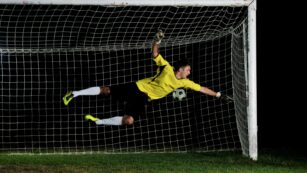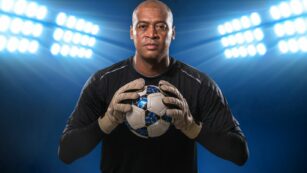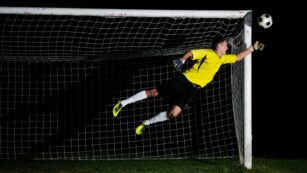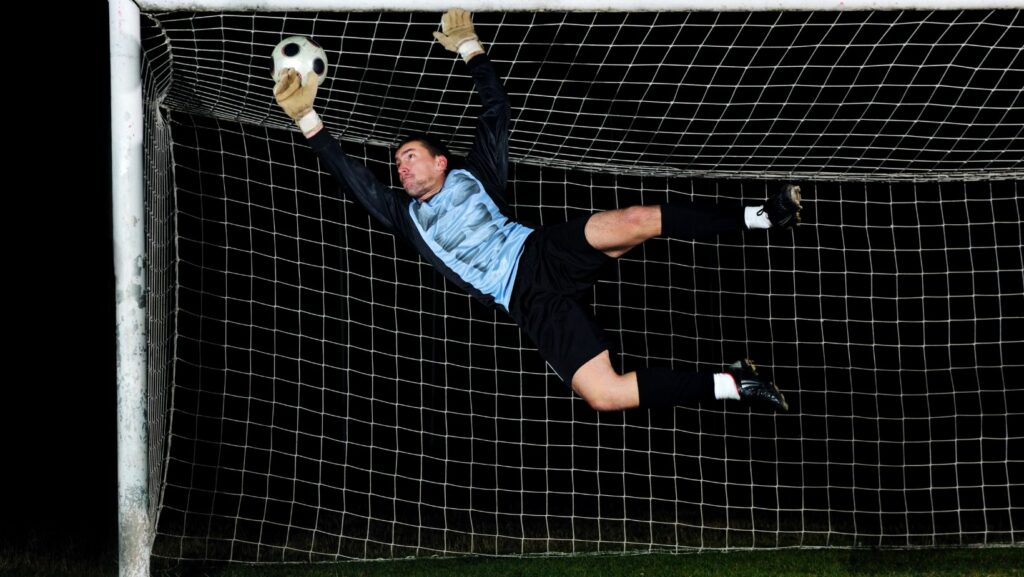Goalkeeping Tips for Beginners
Stepping into the world of goalkeeping can be both exciting and intimidating for beginners. As the last line of defense, a goalkeeper plays a crucial role in any soccer match, and mastering the fundamentals is key to building confidence and skill. From positioning to communication, understanding the essentials can significantly impact a player’s performance on the field.
Fundamental Techniques
Mastering fundamental techniques is crucial for beginner goalkeepers to enhance their skills and performance on the field. This section covers essential aspects such as catching, diving, and positioning.
Catching the Ball
 Catching the ball effectively prevents goals and controls the game. Beginners should focus on:
Catching the ball effectively prevents goals and controls the game. Beginners should focus on:
-
Hand Placement: Use the “W” technique for catches under shoulder height and the “C” shape for balls above.
-
Soft Hands: Absorb the ball’s momentum to minimize rebound.
-
Body Alignment: Position the body behind the ball to increase stability and accuracy.
-
Practice Drills: Utilize wall passes and partner throws to refine hand-eye coordination and reaction times.
Diving Techniques
Diving is essential for stopping shots. Key diving techniques include:
-
Approach Angle: Approach the ball at an angle to maximize reach and control upon landing.
-
Foot Positioning: Use the foot closest to the direction of the dive as a launch point while keeping the opposite leg bent for balance.
-
Arm Extension: Extend arms fully to increase coverage, keeping eyes on the ball while diving, and utilize a safe landing to avoid injuries.
-
Target Zones: Practice diving toward different sides of the goal to adapt to various shot angles and speeds.
Positioning and Angle Play
 Effective positioning boosts goal coverage. Important considerations include:
Effective positioning boosts goal coverage. Important considerations include:
-
Goal Line Awareness: Stay aware of the goal line to maintain an optimal distance from it during play.
-
Angle Management: Positioning should adapt to the attacking player’s angle, closing down the shot as much as possible.
-
Communication: Vocalize with defenders to maintain defensive organization and ensure effective marking.
-
Read the Game: Anticipate the attacking player’s movements and adjust positioning to counter potential shots.
By honing these fundamental techniques, beginner goalkeepers can build a solid foundation for their goalkeeping skills and contribute effectively to their team’s defense.
Training Drills for Beginners
Training drills play a crucial role in developing essential goalkeeping skills for beginners. These drills enhance reaction time, footwork, and overall game readiness.
Reaction Drills
 Reaction drills improve a goalkeeper’s ability to respond quickly to shots.
Reaction drills improve a goalkeeper’s ability to respond quickly to shots.
-
Basic Ball Reaction Drill: A partner throws the ball at various heights and angles, requiring the goalkeeper to catch or deflect the ball effectively.
-
Reflex Reaction Drill: Use two tennis balls; one is thrown while the second is dropped. The goalkeeper must catch both balls, enhancing hand-eye coordination and quick reflexes.
-
Target Practice: Set up targets in the goal and have a partner shoot toward them. The goalkeeper needs to react and position themselves quickly to block or save each shot.
Footwork and Agility
Footwork and agility drills help goalkeepers maintain balance and positioning while facing shots.
-
Lateral Shuffles: Set up cones approximately 5-10 yards apart. Goalkeepers shuffle side to side, focusing on quick, controlled steps to maintain readiness.
-
T Ladder Drills: Use a ladder laid on the ground for foot speed drills. Goalkeepers run through the ladder, ensuring quick and precise movements to enhance agility.
-
Cone Drills: Place cones in a zigzag pattern. Goalkeepers sprint from cone to cone, emphasizing sharp cuts and quick direction changes to simulate game scenarios.
Game Simulation Drills
 Game simulation drills provide practical experience in a controlled environment.
Game simulation drills provide practical experience in a controlled environment.
-
1v1 Situations: Set up a small sided game where a forward attempts to score past the goalkeeper. This simulates real-game pressure and enhances decision-making skills.
-
Crosses and Corners: Practice defending crosses and corner kicks with teammates. The goalkeeper must communicate, position properly, and make clean catches or punches to clear the ball.
-
Small-Sided Games: Participate in small-sided games to focus on positioning and reaction under game-like conditions. Emphasize maintaining an active presence in goal while coordinating with the defense.
Implementing these drills consistently can significantly enhance a beginner goalkeeper’s skills, leading to improved performance during matches.

